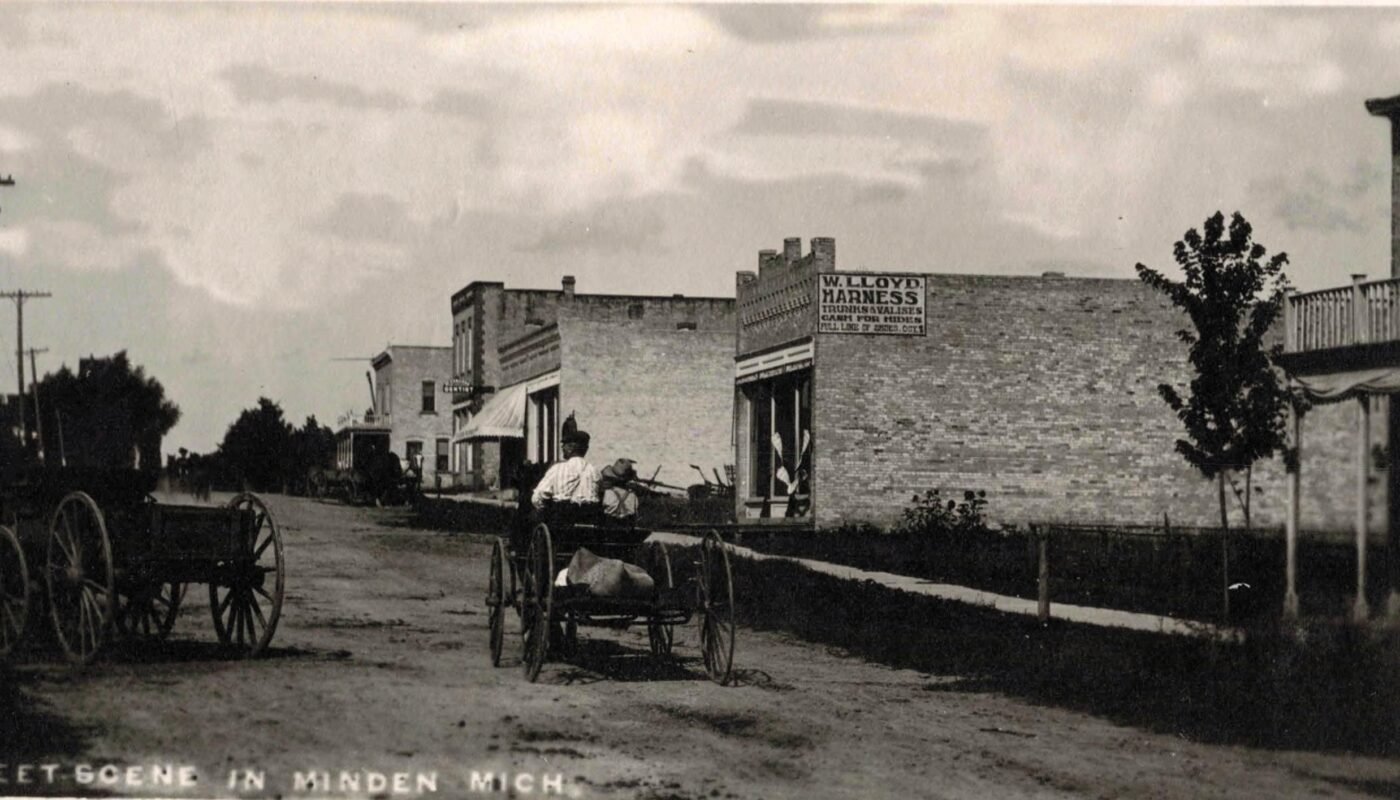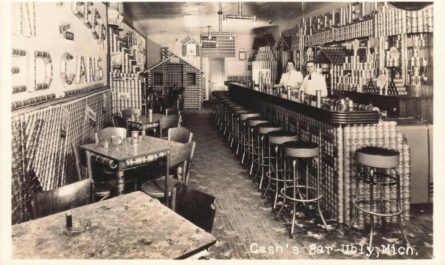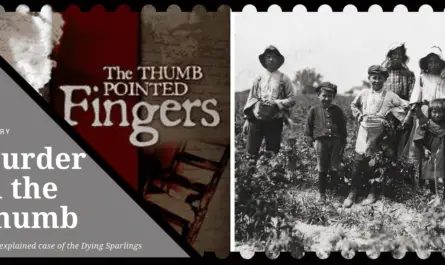This article shares the history of Minden City, Michigan, a small Thumb village shaped by farming, the railroad, and community life between 1880 and 1940. Using vintage photographs, we explore how this town built its identity around Main Street businesses, grain elevators, and the Pere Marquette Railroad.
Video – Main Street, Minden City, 1920s.
Early Beginnings of Minden City
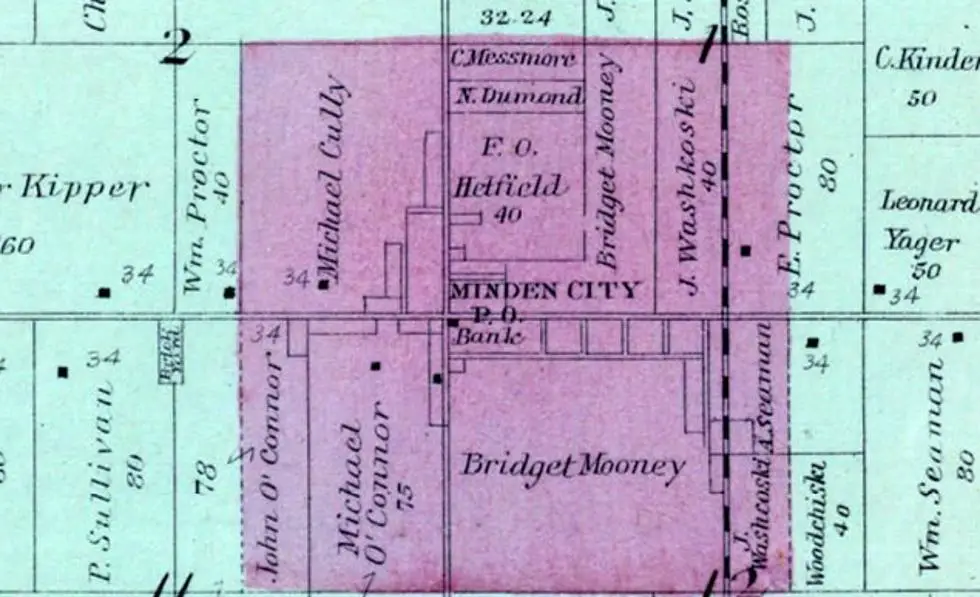
The history of Minden City, Michigan begins in 1855 when the village was first platted during the lumber boom. Settlers were drawn by fertile farmland and the promise of opportunity in Michigan’s Thumb. A post office opened in 1862 under the simple name “Minden.” By 1883, the growing community officially incorporated as Minden City.
The 1871 Thumb Fire devastated much of Sanilac County, destroying farms, homes, and entire towns. Minden City escaped the worst of the flames. In the years that followed, it became a local hub for farming families and merchants who rebuilt their lives after the fire.
The Railroad Arrives
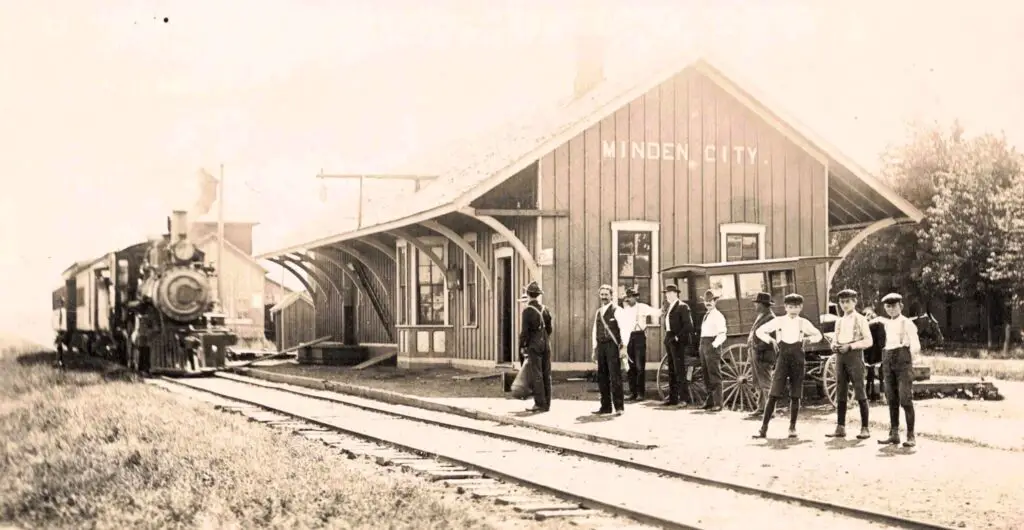
A turning point in the history of Minden City, Michigan, came in 1880 with the arrival of the Port Huron & Northwestern Railroad. The line, later acquired by the Pere Marquette Railroad, provided farmers and businesses with a direct link to markets in Port Huron, Harbor Beach, and beyond.
The Minden City depot became the beating heart of the village. Trains carried out grain, hay, and lumber while bringing in goods that stocked local stores. Families gathered at the station to send off travelers or meet salesmen. The depot symbolized progress, opportunity, and the connection of a small village to the wider world.
Main Street Businesses and Industry
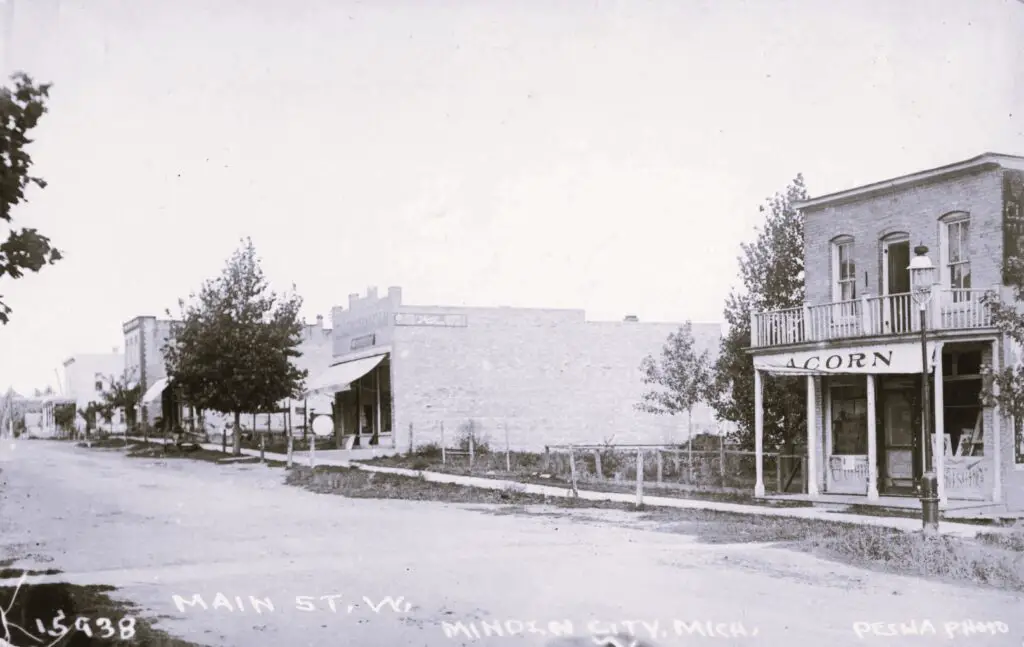
By the late 19th century, Minden City had a bustling Main Street lined with businesses. Shops, hotels, and professional services created a sense of permanence in a farming community.
- Minden City Bank, led by C. L. Messmore, gave farmers access to capital.
- F. O. Hetfield & Sons sold dry goods, clothing, and hardware.
- Minden City Woolen Mills, operated by W. H. Lesynworth, produced textiles.
- Mooney House, a hotel and tavern, offered lodging for travelers and railroad men.
Blacksmiths, harness makers, barbers, and furniture shops served everyday needs. L.H. Riedel’s grain elevator, located near the tracks, loomed large over the shipping yard and reminded residents that agriculture was the backbone of the town.
Baughman’s Hardware and the DeRosia Hotel
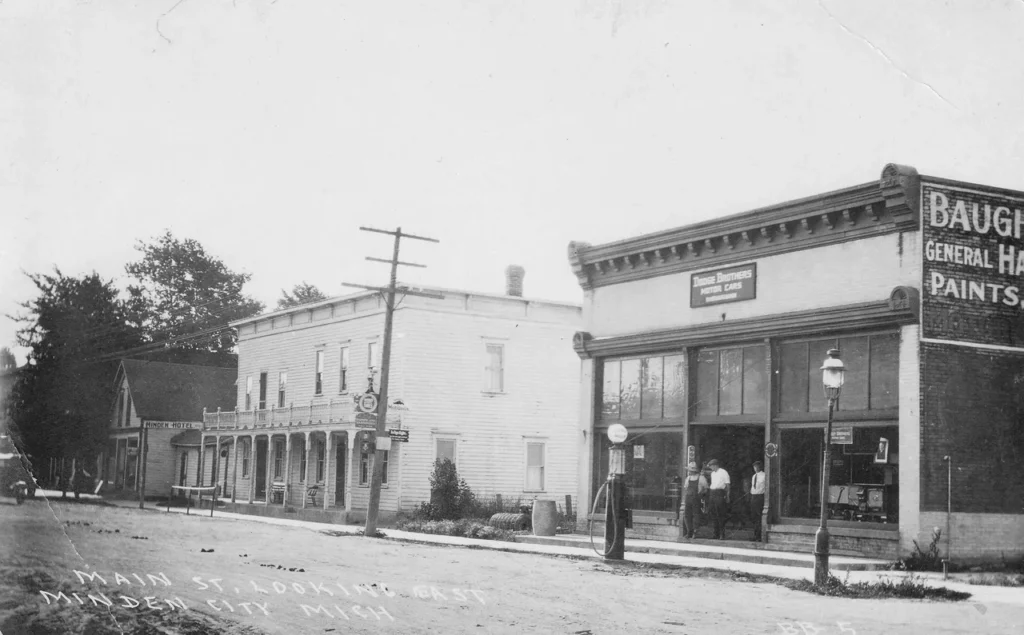
By the early 1920s, Main Street reflected both tradition and modernization. Baughman’s Hardware Store, its brick façade painted with bold lettering, sold tools, paints, and supplies to area farmers. Above its entrance, a sign advertised Dodge Brothers motor cars, signaling that the automobile era had arrived even in the Thumb.
Beside the hardware store stood the DeRosia Hotel, a two-story white frame building that welcomed travelers, salesmen, and visiting farmers. Together, Baughman’s Hardware and the DeRosia Hotel symbolized the balance of old and new—horse-drawn wagons still clattered down Main Street while motorcars increasingly pulled up to the curb.
This image of tradition meeting progress is central to the history of Minden City, Michigan, showing how a farming village adapted to new technologies without losing its identity.
Civic Life and Local Newspapers
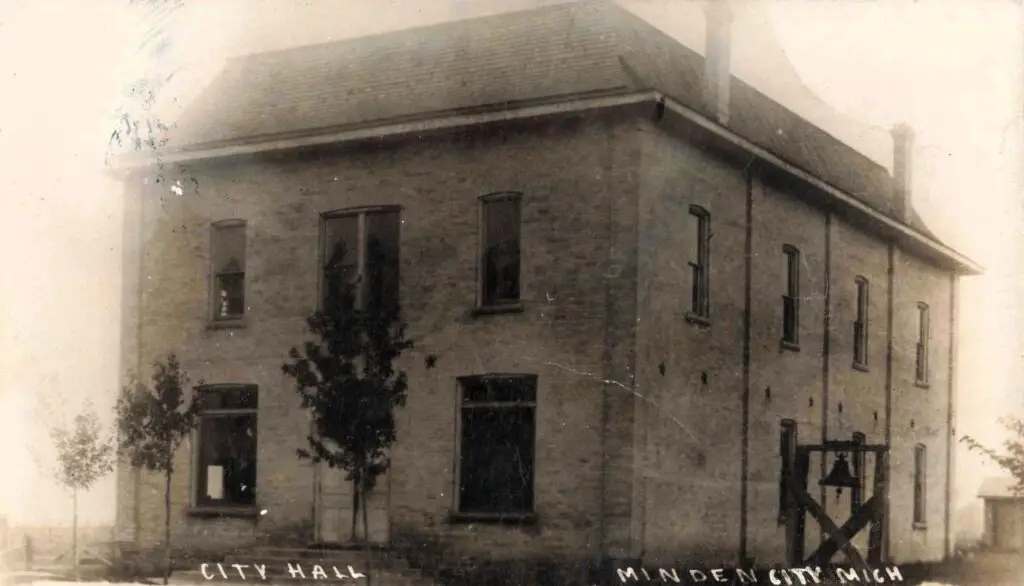
Community institutions gave structure and voice to Minden City. City Hall, built of brick, was more than just an office. Its bell rang out during public meetings, celebrations, and times of mourning. Churches and schools bound families together, passing on faith and education to the next generation.
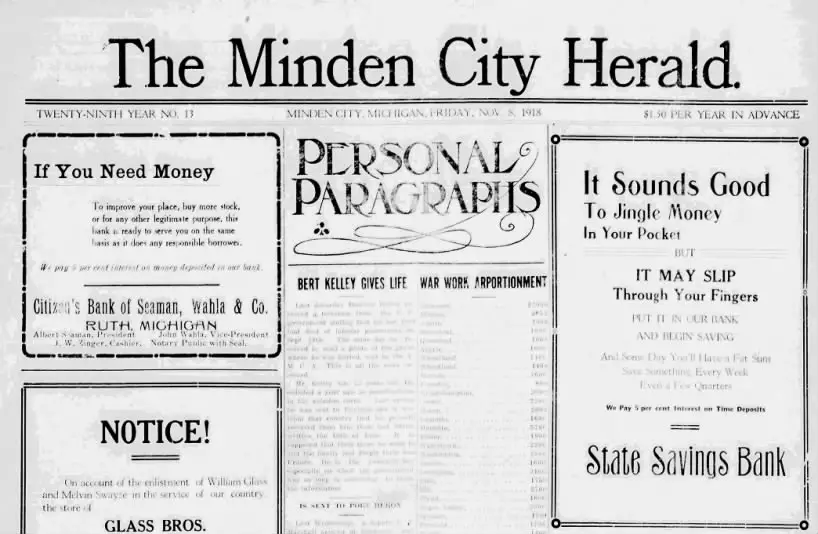
The Minden City Herald, founded in 1889, chronicled the rhythm of everyday life. Its pages carried farm reports, local announcements, and stories of national events. For a small rural village, the Herald was essential—it kept families informed and reminded them they were part of a larger story.
Notable Figures and Families

Several individuals shaped Minden City’s story. C. L. Messmore guided the local bank, while Archy Mooney’s hotel became a gathering place. Thomas Canham ran a general store, and Joseph Morris worked as a furniture maker. The Kosal Brothers operated a meat market that became a local landmark, remembered in photographs showing proud proprietors standing before their storefront.
Population shifts also tell the story of the town. In 1900, Minden City recorded more than 400 residents. By 1930, during the Great Depression, the number had fallen to 277. Still, the village endured, with businesses, schools, and farms holding the community together.
The Great Depression Years
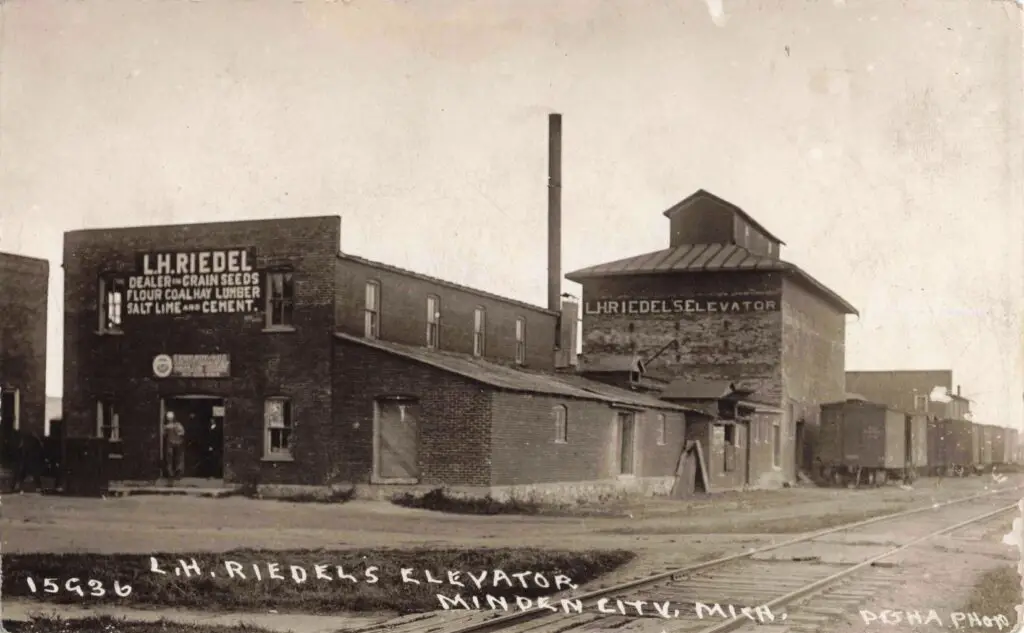
Like many rural Michigan towns, Minden City faced hardship during the Depression. Farming prices dropped, families struggled, and businesses closed. Yet the core of the town remained intact. The grain elevator still operated, trains still stopped at the depot, and the Herald still printed each week.
Minden City did not grow large, but it never disappeared. It stood as an example of how small Michigan villages endured cycles of growth and decline while maintaining their identity.
Why the History of Minden City, Michigan Matters
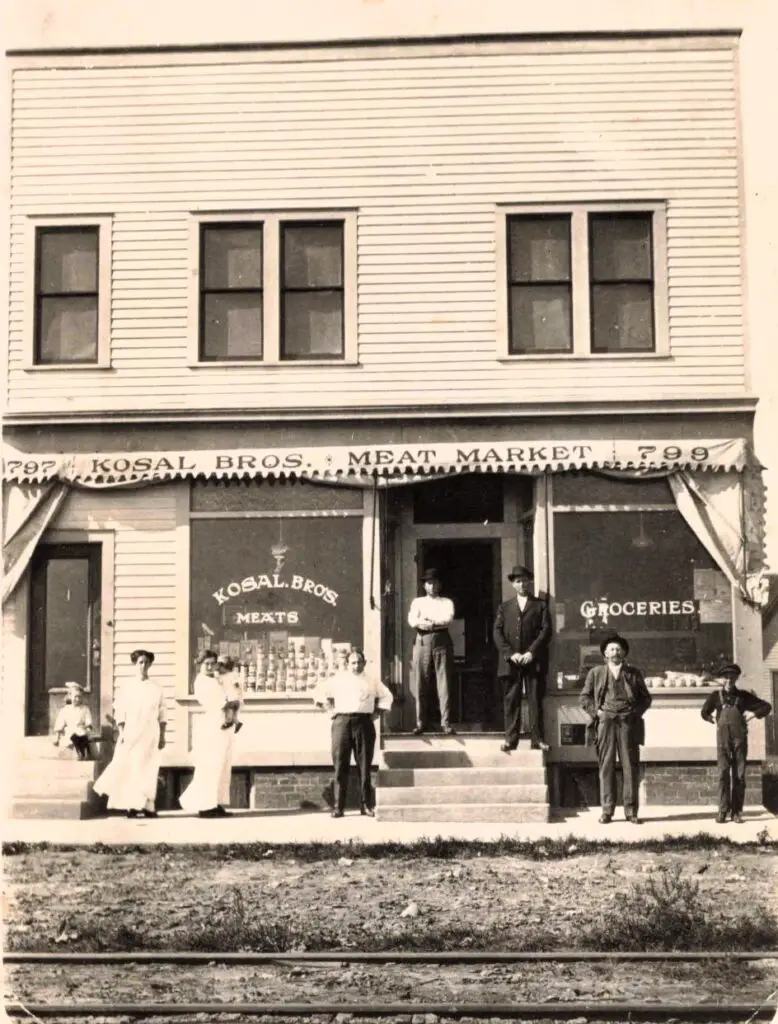
The history of Minden City, Michigan, reflects the broader story of the Thumb. It was a place where farming defined daily life, where railroads brought connection, and where Main Street businesses—from hardware stores to hotels—built the foundation of community.
Through photos of its depot, City Hall, grain elevator, and hotels, we see a record of resilience and adaptation. Families built lives here, raised children, and contributed to a tradition of small-town strength that continues today.
Works Cited
“Atlas of Sanilac County, Michigan, 1894.” Chicago: Geo. A. Ogle & Co., 1894. HathiTrust Digital Library.
“Census of Population and Housing, Sanilac County, Michigan, 1900–1940.” United States Census Bureau. Census.gov.
“History of Minden City.” Michigan Place Names: The History of the Founding and the Naming of More Than Five Thousand Past and Present Michigan Communities. Walter Romig. Detroit: Wayne State University Press, 1986.
“Railroad History of Michigan’s Thumb.” Michigan Railroads & Resource Guide. MichiganRailroads.com.
“Sanilac County Historical Records.” Sanilac County Historical Society. Sanilac County Historical Society.

